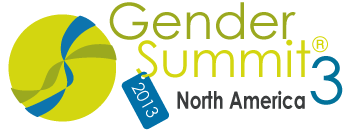GS3 Results
Diversity Fueling Excellence in Research and Innovation: A Roadmap for Action for North America
The rapidly growing global focus on innovation through Research and Development (R&D) and the growth of an increasingly interconnected world economy (NSB 2012) necessitate the development and advancement of a more effective and diverse population of scientists and engineers. A wider and more varied pool of ideas is needed to boost creativity and innovation and to produce better science and better technologies. Gender Summit 3 North America was the third in a series of Gender Summits, initiated in Europe in 2011, that provided a forum for engaging top-level researchers, policy makers, science and innovation leaders, and other stakeholders in science, technology, engineering, and mathematics (STEM) to address gender issues in research and innovation. The aims of the 3rd Gender Summit, which was held on November 13-15, 2013 in Washington DC, were to: create an innovative, comprehensive, evidence based framework of transformative opportunities in STEM that is responsive to the needs of both women and men; demonstrate quality evidence of how incorporating the gender dimension into STEM research and innovation contributes to excellence and maximizes capacity to address societal challenges; expand and transform the Gender Summit into a global forum for collaborative dialogue; share solutions on how to incorporate the gender dimension in research methods, institutional structures, funding structures and peer review processes; and foster an inclusive cross-disciplinary, multi-sector community of experts to address common gender issues in science.
This Roadmap for Action for North America, which emerged from the participation of a diverse group of national and international experts and stakeholders at the Gender Summit, demonstrates through evidence the need for action, lays out what actions to take with commitment shared among the relevant sectors and organizations to implement them, and serves as a model for developing similar roadmaps in other regions.
It is hoped that this roadmap will result in positive and lasting change towards greater diversity in the STEM workforce and leadership and greater inclusion of the “gender dimension” in research content and process. A consensus on five priority areas for action emerged from the many presentations and discussions through the course of the three-day summit: Policy Context; Research Context: Content; Research Context: Process; Human Capital Development and Advancement; and Multinational Collaboration: Current and Future. These priority areas form the basis for the roadmap to action, which aims to promote diversity of researchers and improve intellectual capacity to spur innovation and produce better science.
